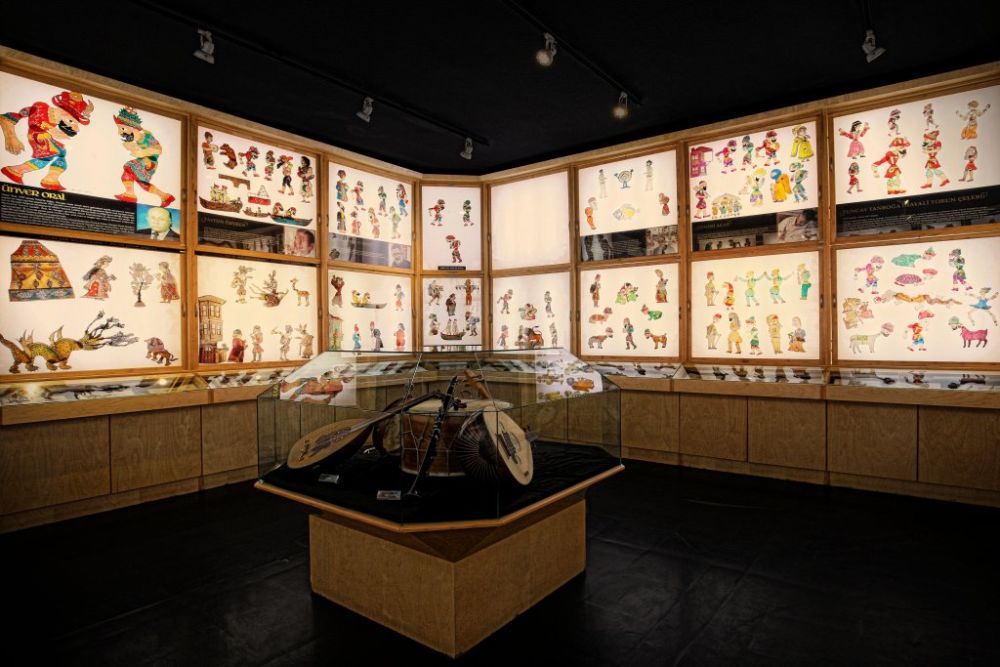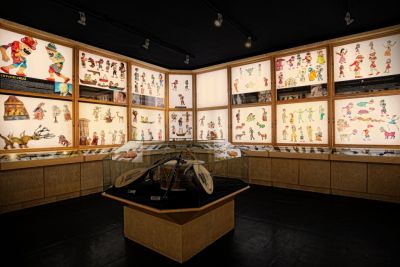

Embark on a fascinating journey into the world of traditional Turkish shadow puppetry at the Karagöz Museum located in Bursa, Turkey. The museum tour provides an intimate look into the cultural heritage of Karagöz and Hacivat shadow plays, which are recognized by UNESCO as an intangible heritage of humanity. Visitors will be able to explore a vast collection of authentic puppets, intricate stage setups, and historical artifacts that tell the story of this unique art form. The exhibition includes interactive displays and multimedia presentations, making it an educational experience for visitors of all ages. Learn about the craftsmanship behind the puppets, the improvisational nature of the shows, and the social and political commentary that these performances often provided throughout history. The museum's knowledgeable guides offer insights into the performances and the significant role they played in Ottoman culture and beyond.
Immerse yourself in the enchanting world of Turkish shadow theatre with a live performance of Karagöz and Hacivat, the iconic characters at the heart of this cultural tradition. Hosted at the Karagöz Museum in Bursa, visitors are treated to a delightful show that captures the witty banter and comedic interactions between Karagöz, the clever yet unsophisticated character, and Hacivat, his more refined and educated counterpart. This activity offers a unique opportunity to witness the puppeteers' skillful manipulation of the figures, bringing the story to life behind a translucent screen illuminated to reveal the colorful silhouettes. The plays, often filled with humor and satire, are not only entertaining but also provide a glimpse into Turkish societal norms and historical context. After the show, engage with the puppeteers to learn more about the improvisational techniques and stories behind these traditional performances.
Unleash your creativity by participating in a puppet-making workshop at the Karagöz Museum. This hands-on activity invites visitors to create their very own shadow puppets under the guidance of skilled artisans who are experts in the traditional art of Karagöz puppetry. During the workshop, you will learn about the cultural significance of the puppets, the typical characters featured in the plays, and the intricate design process. Participants will use traditional materials like leather, camel skin, and specialized tools to cut and paint their puppets, adding personal touches along the way. By the end of the workshop, you will have crafted a one-of-a-kind souvenir to take home, and you'll have gained a deeper appreciation for this ancient Turkish art form. The workshop is suitable for all ages and provides a memorable educational experience blending culture and craft.
Dive deep into the history of Turkish shadow theater with a cultural history seminar at the Karagöz Museum. This enriching experience is perfect for those who wish to gain a comprehensive understanding of the origins, development, and impact of Karagöz and Hacivat plays on Turkish culture and beyond. The seminar is typically led by a museum curator or a cultural historian who provides an engaging lecture complete with visual aids and historical accounts. Topics covered may include the influence of various civilizations on the art form, the role of puppetry in Ottoman society, and how modern adaptations are keeping the tradition alive today. Participants will have the opportunity to ask questions, engage in discussions, and even examine archival materials and primary sources that contribute to their knowledge of this intangible cultural heritage.
The Karagöz Museum offers tailored educational programs for school groups looking to explore the rich cultural tapestry of Turkish shadow puppetry. These programs are designed to align with educational curricula and provide an immersive learning experience for students. During the visit, students will participate in guided museum tours, witness live puppetry performances, and engage in interactive workshops that highlight the storytelling and artistic aspects of Karagöz. Educators can work with museum staff to focus on specific educational themes such as folklore, history, art, and social studies. The aim of these programs is to inspire young minds by connecting them with cultural traditions, enhancing their creative thinking, and fostering a deeper understanding and appreciation of the arts.
The Karagöz Museum is not only a place for entertainment and education but also serves as a research center for scholars, historians, and enthusiasts. This activity provides access to the museum's extensive archive of documents, recordings, photographs, and original puppet specimens. Researchers can delve into the historical context, artistic techniques, and sociopolitical influence of Karagöz puppetry. The archive is an invaluable resource for those writing academic papers, creating documentaries, or simply seeking to learn more about this traditional art. Museum staff are available to assist with research inquiries and direct visitors to relevant materials. Access may require prior arrangement to ensure availability and preservation of the delicate archival items.
Experience the visual splendor of Karagöz shadow theater through a captivating photography exhibition at the Karagöz Museum. This activity showcases a stunning collection of photographs documenting the artistry behind the scenes, the vibrant performances, and the people who have kept this tradition alive throughout the years. The exhibition aims to provide visitors with a visual narrative that complements the physical exhibits in the museum. The carefully curated photographs capture the intricate details of the pupets, the expressions of the puppeteers, and the mesmerized audiences. This visual journey not only celebrates the beauty of the art form but also emphasizes its continued relevance and significance in contemporary culture.
Take a deep dive into the structure and themes of Karagöz plays with the Performance Analysis Workshop offered by the Karagöz Museum. This unique workshop is designed for theater students, academics, and enthusiasts who wish to dissect and analyze the elements that make Turkish shadow puppetry a distinct and influential performing art. Under the guidance of experienced dramaturges and puppeteers, participants will explore the narrative structures, character archetypes, and improvisational techniques used in traditional performances. By examining recorded or live plays, workshop attendees will also discuss the sociocultural commentary embedded in the stories and how they reflect or challenge historical and contemporary societal norms. It's an educational experience that blends art criticism with hands-on learning.
Music plays a crucial role in setting the atmosphere and accompanying the action in Karagöz shadow plays. The Traditional Music Presentation activity at the Karagöz Museum gives visitors an appreciation for the musical landscape that complements the puppetry performances. This presentation often includes live demonstrations of traditional instruments such as the ney (reed flute), tanbur (long-necked lute), and darbuka (goblet drum). Guests will learn about the historical significance of these instruments, the different musical styles associated with Karagöz plays, and how sound effects are employed to enhance the storytelling. Furthermore, the museum may offer insights into how these musical traditions are preserved and adapted for modern audiences, fostering a connection between heritage and innovation in the performing arts.
The Karagöz Museum provides a unique opportunity for filmmakers, documentarians, and media students to document and film traditional Karagöz shadow plays. This activity allows participants to capture the magic of puppetry through their lenses, with the possibility of recording performances, behind-the-scenes preparations, and interviews with puppeteers and experts. The museum setting provides an authentic backdrop for creating educational content, short films, or documentaries aimed at preserving and sharing this traditional art form with a wider audience. Participants should have their own equipment and must obtain the necessary permissions from the museum management in advance. This experience is not only valuable for the creation of visual media but also contributes to the greater goal of documenting cultural heritage for future generations.
